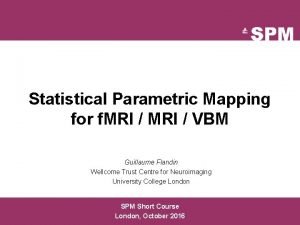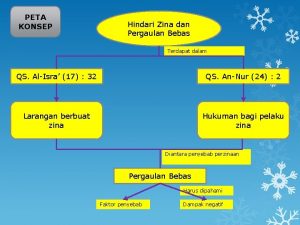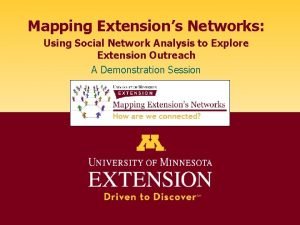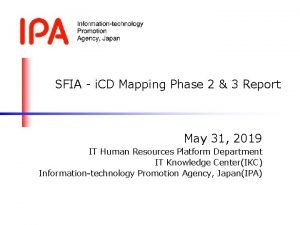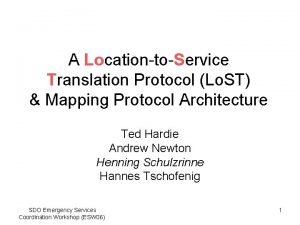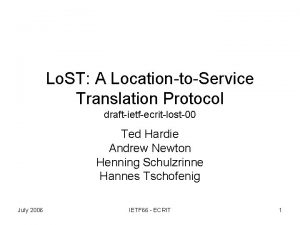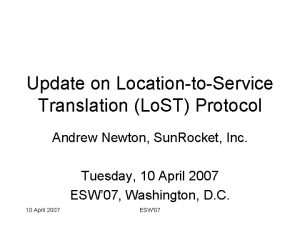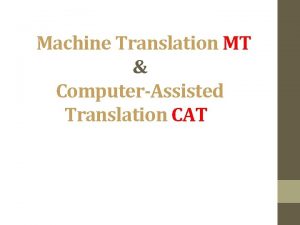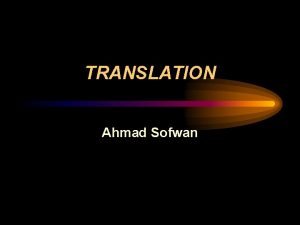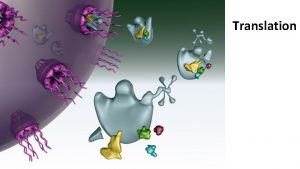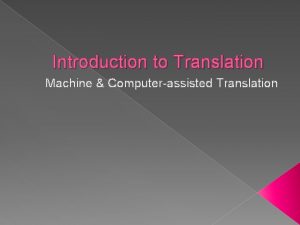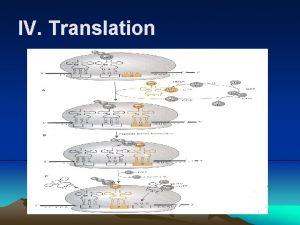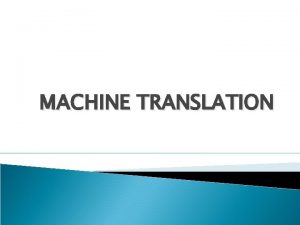A LocationtoService Translation Protocol Lo ST Mapping Protocol













- Slides: 13

A Location-to-Service Translation Protocol (Lo. ST) & Mapping Protocol Architecture Ted Hardie Andrew Newton Henning Schulzrinne Hannes Tschofenig SDO Emergency Services Coordination Workshop (ESW 06) 1

Overview • Lo. ST is a simple XML-based query and response protocol running on top of HTTP – either “naked” HTTP or SOAP • Main Purpose: Return URIs for given location information and service identifier – i. e. , service URN + location URIs • Status: Work in progress – Expected WGLC in Nov. 2006 SDO Emergency Services Coordination Workshop (ESW 06) 2

Finding the correct PSAP • Which PSAP should the e-call go to? – Usually to the PSAP that serves the geographic area – Sometimes to a backup PSAP – If no location, then ‘default’ PSAP SDO Emergency Services Coordination Workshop (ESW 06) 3

Lo. ST Functionality • Satisfies the requirements (draft-ietf-ecrit-requirements) for mapping protocols • Civic as well as geospatial queries – civic address validation • Recursive and iterative resolution • Fully distributed and hierarchical deployment – can be split by any geographic or civic boundary – same civic region can span multiple Lo. ST servers • Indicates errors in civic location data debugging – but provides best-effort resolution • Supports overlapping service regions SDO Emergency Services Coordination Workshop (ESW 06) 4

Lo. ST Properties • Minimizes round trips: – caching individual mappings – returns coverage regions (“hinting”) • civic (“all of C=US, A 1=NY”) or geo (polygon) • Facilitates reuse of Transport Layer Security (TLS) • Returns emergency service numbers for a region • Query for supported Service URN types SDO Emergency Services Coordination Workshop (ESW 06) 5

Protocol request (mapping) <? xml version="1. 0" encoding="UTF-8"? > <find. Service. By. Location xmlns="urn: ietf: params: xml: ns: lost 1" validate="false" operation="recursive"> <location. Info> <civic. Location> <country>US</country> <A 1>New York</A 1> <A 3>New York</A 3> <A 6>Broadway</A 6> <LOC>Suite 75</LOC> <PC>10027 -0401</PC> </civic. Location> </location. Info> <service>urn: service: sos. police</service> </find. Service. By. Location> details likely to change SDO Emergency Services Coordination Workshop (ESW 06) 6

Protocol response (mapping) <? xml version="1. 0" encoding="UTF-8"? > <response xmlns="urn: ietf: params: xml: ns: lost 1"> <result status="200" message="OK" xml: lang="en" time. To. Live="10000"> <display. Name xml: lang="en"> New York City Police Department </display. Name> <service>unknown</service> <service. Boundary> <civic. Location> <country>US</country> <A 1>New York</A 1> <A 3>New York</A 3> </civic. Location> </service. Boundary> <uri>sip: nypd@example. com</uri> <uri>xmpp: nypd@example. com</uri> <service-number>911</service-number> </result> </response> SDO Emergency Services Coordination Workshop (ESW 06) 7

Validation • Determine if civic location is (partially) valid • Returns XML tag names of components: – validated and used for mapping – no attempt to validate (and not used) • e. g. , house number – known to be invalid • Return (default) PSAP based on validated elements • May return list of guesses for correct addresses, if requested SDO Emergency Services Coordination Workshop (ESW 06) 8

Geo support • Which geo types should be supported? – Point (3 D) – Polygon? may yield ambiguous answers – more complicated shapes? • Current proposal – always include 3 D-point – may include other shapes SDO Emergency Services Coordination Workshop (ESW 06) 9

Lo. ST: Location-to-URL Mapping VSP 1 cluster serving VSP 1 replicate root information cluster serves VSP 2 123 Broad Ave Leonia Bergen County NJ US Lo. ST NJ US sip: psap@leonianj. gov root NY US nodes search referral Bergen County NJ US Leonia NJ US SDO Emergency Services Coordination Workshop (ESW 06) 10

Lo. ST Architecture G tree guide G G G T 1: . us G broadcast (gossip) T 2: . de resolver seeker 313 Westview Leonia, NJ US T 2 T 1 (. us) SDO Emergency Services Coordination Workshop (ESW 06) (. de) T 3 (. dk) Leonia, NJ sip: psap@leonianj. gov 11

Conclusion • Mapping is core component of emergency calling problem • Lo. ST fully international and distributed – tries to avoid “who runs the root” problem • optimized for efficient use in mobile end systems SDO Emergency Services Coordination Workshop (ESW 06) 12

References and Contact Info • IETF ECRIT Working Group http: //www. ietf. org/html. charters/ecrit-charter. html • Lo. ST draft http: //tools. ietf. org/wg/ecrit/draft-ietf-ecrit-lost/ • Mapping architecture draft: http: //tools. ietf. org/wg/ecrit/draft-ietf-ecrit-mapping-arch • Prototype implementation work in progress (see demo) – First interoperability tests planned for early 2006 / beginning 2007. SDO Emergency Services Coordination Workshop (ESW 06) 13
 Memory parameters
Memory parameters Forward mapping vs backward mapping
Forward mapping vs backward mapping Prinsip analisis dan desain
Prinsip analisis dan desain Noun to noun
Noun to noun Semantic vs communicative translation
Semantic vs communicative translation Voice translation profile
Voice translation profile Left and right transformations
Left and right transformations Concept map of kingdom fungi
Concept map of kingdom fungi Statistical parametric mapping software
Statistical parametric mapping software Value streem mapping
Value streem mapping Peta konsep
Peta konsep Mapping extensions
Mapping extensions Identity mapping activity
Identity mapping activity Sfia implementation
Sfia implementation








